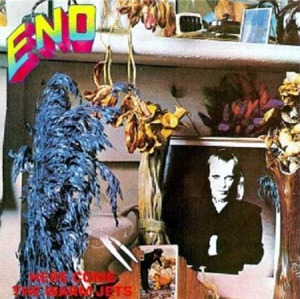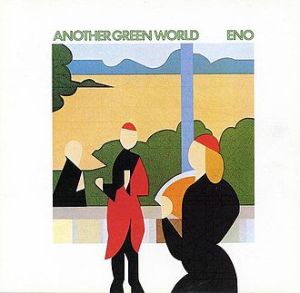
America – Simon & Garfunkel
Let us be lovers we’ll marry our fortunes together
I’ve got some real estate here in my bag
So we bought a pack of cigarettes
and Mrs Wagner pies
and walked off to look for America
It was some time in early 2015 when I became aware of the two Swedish sisters Johanna & Klara Söderberg who call themselves First Aid Kit covering this evergreen classic. Clear, bright, bel canto voices with a precise harmonic shiver : the song lived again in their youthful rendition. It marked our first year living in New York City, two English actors who’d packed two suitcases and one cat each and upped and flown to the Big Apple on a whim in February 2014. My wife Jenny and I had moved six times by the time I heard this cover of Simon & Garfunkel‘s song, from Harlem in the snow, to the top floor of a brownstone in Washington Avenue in Brooklyn in the deeper snow (and an encounter with fairy godmother Johanna), across the street to a sublet in an apartment block, to the Village in Manhattan, then Air Bob in Bed-Stuy, to Hall St in Clinton Hill, now next door in Fort Greene. It was our third major stint looking for America. First – 1992 Los Angeles for three years, Venice, West Hollywood and Green Cards. Next – 2002 Los Angeles for another two years – Los Feliz. Now New York. Coming up for two years as I write this.

My first experience of America was in 1976 when my best friend Simon Korner and I hitch-hiked from New York to Los Angeles to Vancouver to Cape Cod. It was our gap year – though it was called “a year off” back then. We’d done our A-levels, got our University places sorted – him at Cambridge, me at LSE. I’d then left home and gone to work in Laughton Lodge as a Nursing Assistant, a period I outlined briefly in My Pop Life #58.
Essentially I was required to keep an eye on a ward-full of 30 men of differing shapes and sizes, but all classified in 1975 as ‘Mentally Subnormal’. Some of them were dangerous. Some were catatonic. Now they would be called clients with a learning difficulty. All this for a later blog, but I mention it in passing. I worked there from October through to April 1975, saving money to fly to New York with Simon, to go and look for America.
It was terribly exciting, we were 18 going on 19 and from a small Sussex town called Lewes. Seeing the skyscrapers of Manhattan, the Smithsonian, the wide open prairies of Nebraska, the Rocky Mountains, Monument Valley and the Arizona desert was an unparalleled experience for two young men, and it changed and bonded us both. Paul Simon did a similar trip with Kathy Chitty in 1964, inspiring this song. I kept a diary of our trip and at one point in New Mexico wrote a kind of Ode :
America ! America ! The skies all seem to say !
Or are they saying something else, like : “Let’s be on our way” ?
It’s rather hard to tell because it’s cloudy out today
But Ralph and Sigh don’t mind because they’re IN THE USA !!
Fairly safe to say there wasn’t a budding Paul Simon hiding within at that point. It’s more of a Soviet Farm Song satire.
Perhaps not surprisingly this song always makes me feel emotional for reasons I can’t quite put my finger on. The ultimate line :
“…counting the cars on the New Jersey Turnpike, they’ve all come to look for America…”
is so simple and ordinary yet it has a poetic magic that lifts the song into a mythical hymn for the soul. Of all those people searching for their best life on this vast continent. Plenty wrong with the USA of course which I won’t rehearse here. this is about the other side of the coin. The optimism of America, constantly encouraging, constantly asking you to make the very best of yourself. The reason why we keep coming back. The hope. The interior yearning made physical reality.

We had Simon & Garfunkel’s Greatest Hits in our house all through childhood, Mum must have bought it. This song didn’t stand out to me at the age of ten or eleven, I was hooked on Sound Of Silence, Parsley Sage Rosemary & Thyme, Homeward Bound. But it must have crept under my skin because it has become one of my favourite songs of all time. Again, I’m not sure why, but it has a strange ineffable power : unusually there is no rhyme at all in the lyrics, and the chorus is just one line, slightly altered each time “…look for America”. Paul Simon evidently knows that from the specific and the individual experience comes the universal : the details of the Greyhound Bus trip from Pittsburgh which had started as a hitch-hiking journey from Saginaw, Michigan, the cigarettes, the jokes, the youthful joy which turns to melancholy in the last verse :
“Kathy I’m lost” I said, though I knew she was sleeping..I’m empty and aching and I don’t know why“
the reference to smoking pot “some real estate here in my bag” and the the space between the two voices above all lend this three-minute masterpiece a unique power. In particular the middle verse :
“So I looked at the scenery, she read her magazine and the moon rose over an open field..”
has no equal in pop writing for me. There is just so much space in the song, and the listener fills it with their own fantasies, desires and feelings. But mainly with their own bruised optimism.

graffitti on an abandoned building in Saginaw
I thought I would post the First Aid Kit version because I became rather obsessed with it, but after a few months of listening to hip hop and electronica I went back to it. It still sounds bright and beautiful, but it is in the end a cover of a classic. There are technical issues – chopped bar lines and other things I won’t bore you with, Paul Simon’s song is best served in the end by Art Garfunkel and himself, some acoustic guitars, a wandering soprano saxophone and a melodic bassline. Larry Knechtel on Hammond organ and Hal Blaine on the drums join them on this recording, but essentially the space created between all of these elements is where the song’s beauty lies, which the Swedish sisters have understood so well. David Bowie made a similar empty echoing version immediately after 9/11 which I post below.

My other memory of this song is the film Almost Famous of course, a film about music with one of the finer soundtracks I can remember. The closing credits roll over The Beach Boys’ “Feel Flows“the closing song on their 1971 LP Surf’s Up and well outside the 20 Golden Greats arena. Simon & Garfunkel’s song accompanies the young hero leaving home, looking for America. One of those cliches that always lands.

Simon & Garfunkel 1966
Paul Simon is one of the finest songwriters of any era. I sang his solo praises in My Pop Life #89 . The combination he had with Art Garfunkel was immaculate though and unlikely to be bettered as a vehicle for his amazing songs. I think they fell out probably – and unspoken issues kept them apart aside from one remarkable song My Little Town and a concert in Central Park in 1981 when they tried to heal the rift to no avail.

Carousel Singers at the Unitarian Church Brighton 2013
Towards the end of my Brighton period, around 2013 I suppose, I joined a group run by Julia Roberts called The Carousel Singers. I was suggested by ace percussionist Paul Gunter who played for a while with The Brighton Beach Boys and is a senior graduate of Stomp – because Carousel – or rather Julia – were looking for a pianist who could accompany a choir of learning-disabled adults. My year with Carousel was extraordinary, funny, moving and occasionally sad. We’d meet every Wednesday evening in the Unitarian Church on New Road in the centre of Brighton. Julia, Paul, another musician Gabrielle, graduate Karis and me. My instinct was always to push the singers further, assume that they could do things that perhaps they hadn’t been asked to do before, stretch them out a bit. And we used to write songs together, as a group. In particular the choir members would come up with the lyrics, and I would supply some kind of tune and chords to go with them. The first time we did this, for a song we called Song For Iain, I used a simple descending F to C bassline which pleases the ear and sounds very POP, but for the second song I just couldn’t get ‘America‘ out of my brain, and blatantly lifted chunks of melody for the choir to sing. Fran in particular got it, and always remembered the tune from one week to the next. Others joined her. Others again could scarcely talk let alone sing, but it was a group which looked out for each other and didn’t judge, but always supported each other. I learned a huge amount from working with these people, who just 40 years earlier would have been on a locked ward in a Mental Hospital being dosed-up with various drugs. The Carousel Singers all have a level of independence, and a huge reservoir of compassion combined with a lack of judgement of other people’s ability and capability. It was extraordinarily moving. I do believe that we could learn a great deal from adults and children with learning difficulties.
Meanwhile I’m still looking for America. Wish me luck.

Simon & Garfunkel :
First Aid Kit get an ovation from Paul Simon :
the David Bowie video isn’t available. But here’s the Central Park gig :




